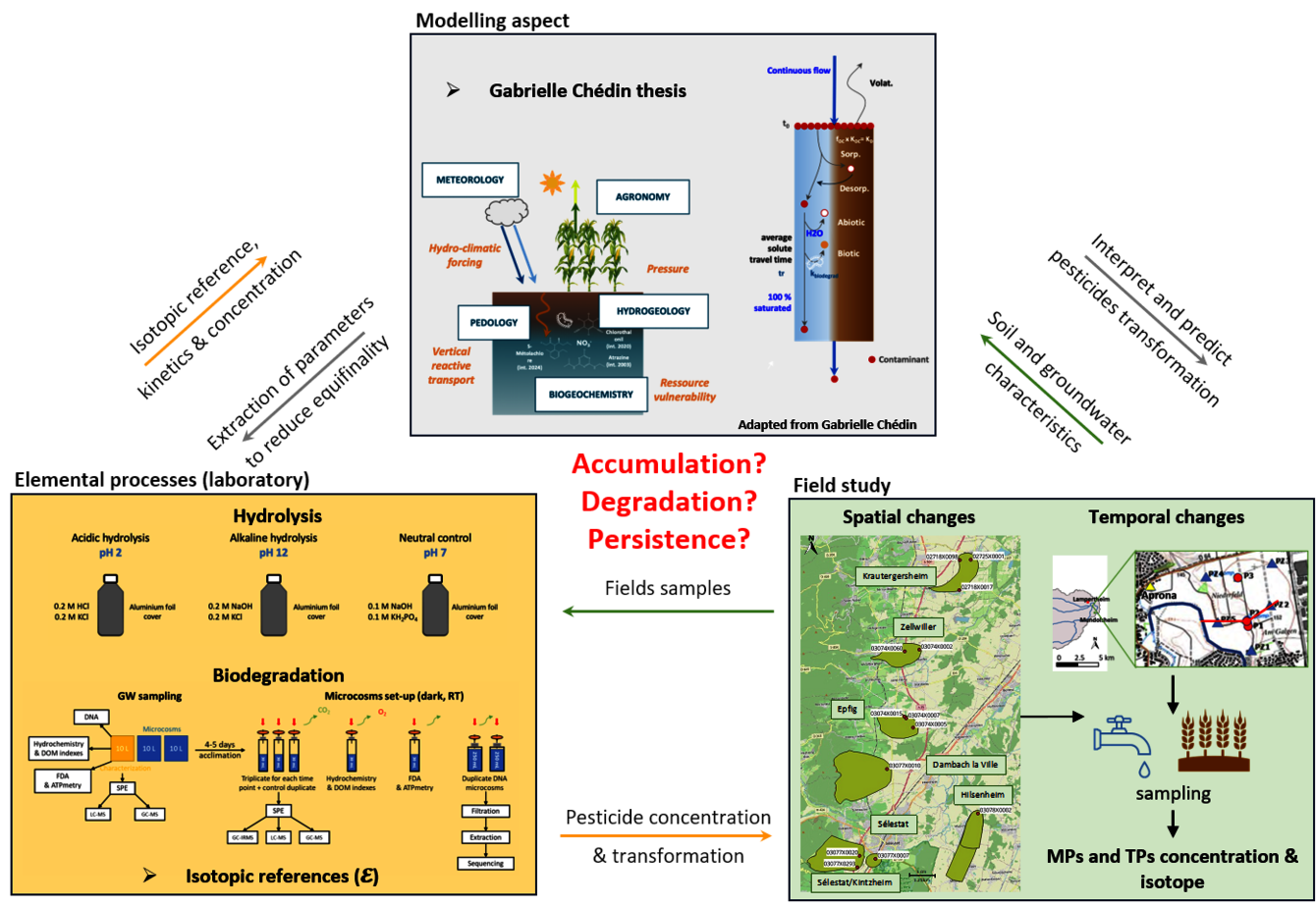Doctorante depuis le 01-11-2023, sous la direction de Gwenaël Imfeld et de Sylvain Payraudeau
Transport et transformation des produits de transformation des pesticides dans les zones non saturées des écosystèmes agricole
Vous êtes ici :
Doctorante depuis le 01-11-2023, sous la direction de Gwenaël Imfeld et de Sylvain Payraudeau
Transport et transformation des produits de transformation des pesticides dans les zones non saturées des écosystèmes agricole
The increased use of synthetic fertilizers and plant protection products, coupled with the specialization of agricultural lands, has led to elevated nitrate and pesticide concentrations in water catchments used for drinking water supply, raising concerns about environmental sustainability and human health. Since 2021, new European regulations on drinking water quality have included pesticide transformation products in the list of monitored compounds. Consequently, water management professionals need complementary approaches to address these regulations. Firstly, they need to prioritize the monitored molecules based on their behavior in the transition from soil to the water table. This involves identifying compounds that exhibit persistence, degrade slowly, or present an accumulation risk within the unsaturated zone (USZ). Secondly, it is necessary to assess the natural attenuation capacity of pesticides and their transformation products in strategically significant or vulnerable catchment areas, as well as their resilience in the face of persistent soil pollution. Understanding the hydrological and biogeochemical dynamics within the USZ, particularly concerning pesticide transport and transformation in relation with the nitrogen cycle, is crucial for developing effective practices and strategies to monitor and reduce the movement of these substances from surface soil to groundwater. Limited research has explored the intricate connections between the nitrogen cycle and the transformation of synthetic pesticides and their byproducts within both the unsaturated and saturated zones of the soil-groundwater continuum. This understanding is pivotal for predicting alterations in water quality and estimating the duration necessary for the natural attenuation of pesticide residues within the USZ.
The objectives of this thesis project, developed within TOPENSUZ project (2023-2027), aims to enhance our understanding and predictive capabilities (connected with Gabrielle Chédin's thesis) concerning the role of the unsaturated zone in the transport and transformation of pesticides and their transformation products (TPs), across the surface soil-unsaturated soil-groundwater continuum. Our investigation combines microcosm experiments to examine elemental transformation processes and field studies. It relies on compound-specific stable isotope analysis, concentration measurements and microbiology measurements to follow pesticides and associated TPs in both groundwater and soil as well as nitrates dynamics in relation with microbial communities within collaboration in TOPENSUZ. This study will combine laboratory experiments to determine a conceptual framework to interpret concentration and CSIA data from field sampling campaigns focusing on the spatial variability of natural attenuation processes in USZ across different drinking water protected area (Séléstat study) and the temporal dynamics of transport and transformation of pesticide transformation products throughout the unsaturated zone of a crop agro-ecosystem (Lampertheim, 67) connected to a catchment area (Souffel, 67).

